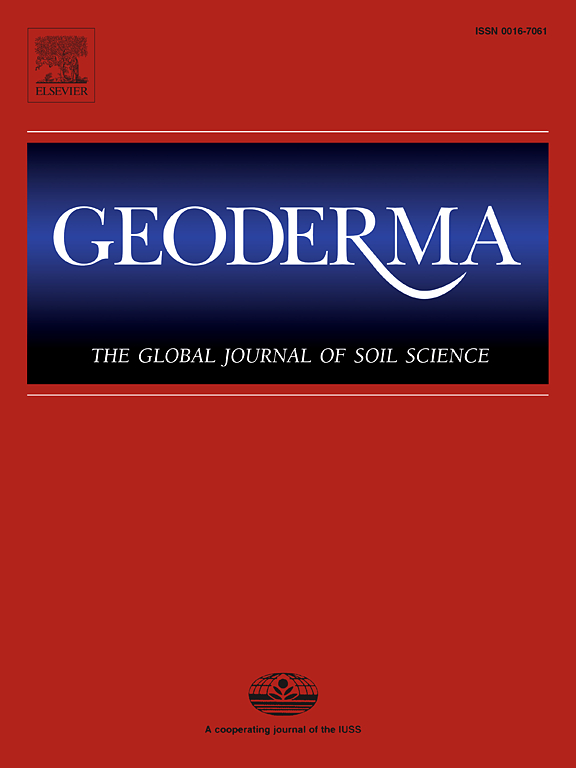利用可见光-近红外光谱技术跟踪实验室裸土蒸发过程中的土壤水分动态
IF 6.6
1区 农林科学
Q1 SOIL SCIENCE
引用次数: 0
摘要
许多研究在实验室中调查了光谱信号与土壤湿度之间的关系,通常使用具有预定义湿度水平的土壤样品数据进行模型校准。然而,光谱监测能否准确捕捉干燥过程中土壤表面水分的动态变化还有待检验。在沙土和粉砂壤土两种土壤类型的5 cm高填土柱上进行蒸发试验。使用ASD Fieldspec®Pro光谱仪(350-2500 nm)在可见光、近红外和短波红外域反复记录光谱,评估每个土壤柱的地表水含量。然后将推断出的含水量与Richards方程的数值模拟结果进行比较,Richards方程以简化蒸发法确定的土壤水力特性和测量的蒸发速率作为边界条件。为了建立光谱模型,用ASD独立分析了确定含水量的样品。在三种检验的光谱模型(多项式线性回归、主成分回归和偏最小二乘回归)中,多项式线性回归的模型性能最好。在瞬态蒸发实验中,光谱模型得到的地表水含量普遍低于Richards方程的预测值。淤泥质壤土的土壤水分估算值与模拟值非常接近(平均误差= 2.81 vol%),而沙质土则表现出系统性低估(平均误差= 7.13 vol%),这可能是由于测量设置和接触探针放置相关因素所致。本文章由计算机程序翻译,如有差异,请以英文原文为准。
Tracking soil moisture dynamics with Vis-NIR spectroscopy during laboratory bare-soil evaporation
Numerous studies have investigated the relationship between spectral signal and soil moisture in the laboratory, usually using data from soil samples with predefined moisture levels for model calibration. However, it remains untested whether spectral monitoring can accurately capture the dynamic moisture changes occurring at the soil surface during drying. We conducted evaporation experiments on 5 cm tall packed soil columns of two soil types (sand and silt loam). The surface water content of each soil column was assessed by repeatedly recording spectra in the visible, near infrared, and shortwave infrared domain using an ASD Fieldspec® Pro spectrometer (350–2500 nm). The inferred water contents were then compared to those obtained from a numerical simulation with the Richards equation, which used soil hydraulic properties determined with the simplified evaporation method and measured evaporation rates as boundary condition. To develop the spectral model, samples with defined water contents were independently analyzed with the ASD. Among the three tested spectral models (polynomial linear regression, principal component regression (PCR) and partial least squares regression (PLSR)), the best model performance was achieved by polynomial linear regression. Regarding the transient evaporation experiments, the spectral model led to generally lower surface water contents than those predicted by the Richards equation. While soil moisture estimates for the silt loam closely matched simulated values (mean error = 2.81 vol%), the sandy soil exhibited systematic underestimations (mean error = 7.13 vol%), likely due to factors related to measurement setup and contact probe placement.
求助全文
通过发布文献求助,成功后即可免费获取论文全文。
去求助
来源期刊

Geoderma
农林科学-土壤科学
CiteScore
11.80
自引率
6.60%
发文量
597
审稿时长
58 days
期刊介绍:
Geoderma - the global journal of soil science - welcomes authors, readers and soil research from all parts of the world, encourages worldwide soil studies, and embraces all aspects of soil science and its associated pedagogy. The journal particularly welcomes interdisciplinary work focusing on dynamic soil processes and functions across space and time.
 求助内容:
求助内容: 应助结果提醒方式:
应助结果提醒方式:


